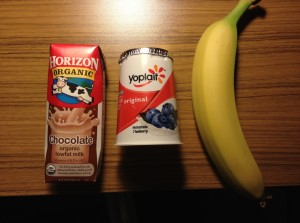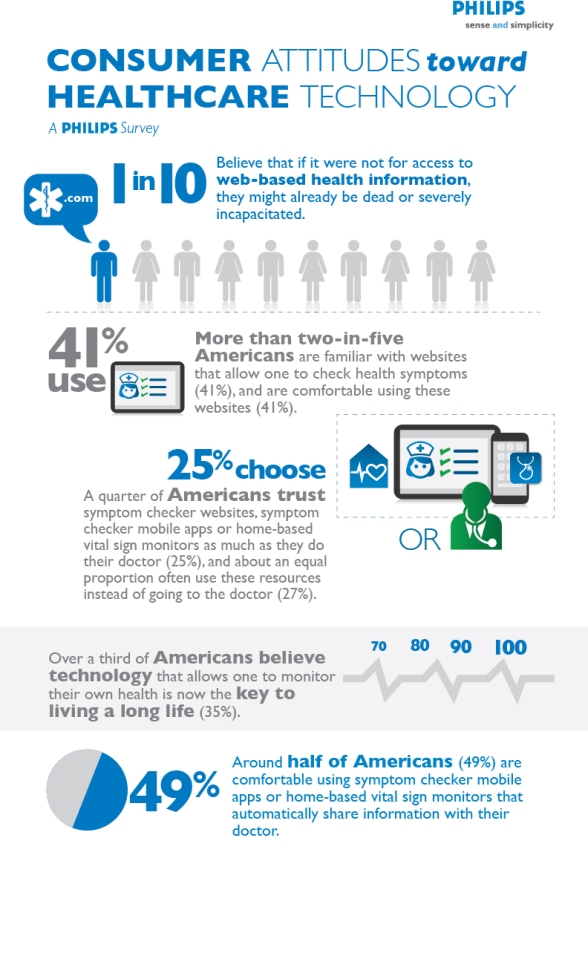In the spirit of the Quantified Self movement and in order to better understand how mHealth tools like FitBit can drive behavior change, I’ve been using a FitBit One for about 6 weeks now. I’ve posted some notes along the way, but I thought I’d do a wrap up post here. Here’s the old posts.
Those were focused mostly on the device itself. Now I’ve had some time to play with the mobile app. Let me provide some comments there. And, with the data showing a jump in buyers this year, I expect this will be a hot topic at the Consumer Electronics Show this week.
- The user interface is simple to use. (see a few screenshots below)



-
I feel like it works in terms of helping me learn about my food habits. (Which I guess shouldn’t be surprising since research shows that having a food diary works and another recent study showed that a tool worked better than a paper diary.) For example, I learned several things:
- I drink way too little water.
- I eat almost 65% of my calories by the end of lunch.
- Some foods that I thought were okay have too many calories.
- In general, the tracking for my steps makes me motivated to try to walk further on days that I’m not doing good.
- The ease of use and simple device has helped me change behavior. For example, when I went to go to dinner tonight, I quickly looked up my total calories and saw that I had 600 calories left. Here’s what I ate for dinner. (It works!)
But, on the flipside, I think there are some simple improvement options:
- I eat a fairly similar breakfast everyday which is either cereal with 2% milk and orange juice or chocolate milk (if after a workout). [In case you don’t know, chocolate milk is great for your recovery.] Rather than have to enter each item, FitBit could analyze your behavior and recommend a “breakfast bundle”. (and yes, I know I could create it myself)
-
Some days, I don’t enter everything I eat. When I get my end of week report, it shows me all the calories burned versus the calories taken in. That shows a huge deficit which isn’t true. I think they should do two things:
- Add some type of daily validation when you fall below some typical caloric intake. (Did you enter all your food yesterday, it seemed low?)
- Then create some average daily intake to allow you to have a semi-relevant weekly summary.
- The same can be true for days that you forget to carry your device or even allowing for notes on days (i.e., was sick in bed). This would provide a more accurate long-term record for analysis.
- The food search engine seems to offer some improvement opportunities. For example, one day I ate a Dunkin Donuts donut, but it had most types but not the one I ate. I don’t understand that since there’s only about 15 donuts. But, perhaps it’s a search engine or Natural Language Processing (NLP) issue. (I guess it could be user error, but in this case, I don’t think so.)
- Finally, as I think about mHealth in general, I think it would be really important to see how these devices and this data is integrated with a care management system. I should be able to “opt-in” my case manager to get these reports and/or the data.
The other opportunity that I think exists is better promotion of some things you don’t learn without searching the FitBit site:
- They’re connected with lots of other apps. Which ones should I use? Can’t it see which other ones I have on my phone and point this out? How would they help me?
- There’s a premium version with interesting analysis. Why don’t they push these to me?
I also think that they would want an upsell path as they rollout new things like the new Flex wristband revealed at CES.

And, with the discussions around whether physicians will “prescribe” apps, it’s going to be important for them to be part of these discussions although this survey from Philips showed that patients continue to increasingly rely on these apps and Dr. Google.
Finally, before I close, all of this makes me think about an interesting dialogue recently on Twitter about Quantified Self.


 January 8, 2013
January 8, 2013 




Other reviews:
http://gizmodo.com/5954563/fitbit-one-review-a-great-way-to-monitor-your-wretched-laziness
http://www.engadget.com/2012/11/13/fitbit-one-tracker-now-on-sale/
http://arstechnica.com/gadgets/2012/11/hands-on-with-the-new-fitbit-one-and-its-dubious-upgrades/
http://www.techradar.com/us/reviews/phones/fixed-line-phone-accessories/fitbit-one-1117503/review
Last comment to my own post 🙂
1 – I’ve mentioned FitBit on the blog and Twitter a few times. They must not monitor social media like other companies. I typically would have heard something from them.
2 – If you go to their executives profiles, they offer a link to their FitBit profile. Several of them have no data or it’s all private. Very strange to showcase it but have nothing there.
Another lesson learned…there is a gap between actual stairs walked and stairs tracked. I’ll have to capture it, but when I went to get my 100 flights of stairs badge one day, I think I had to walk about 115.
Lesson learned here – don’t put the FitBit on your shoe. I thought it would improve accuracy, but it barely registered.